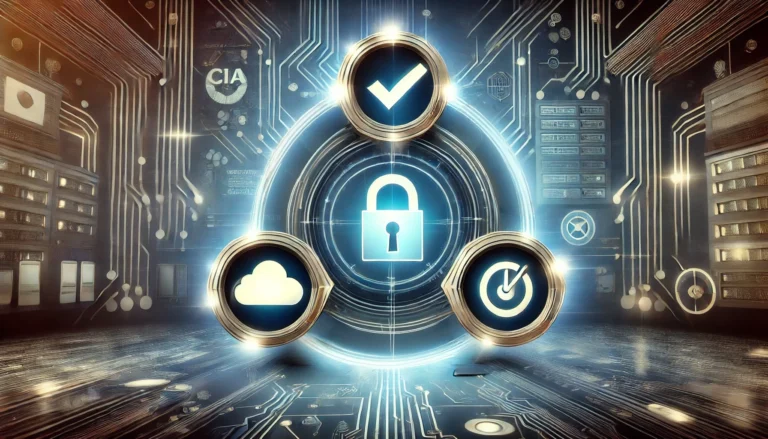In today’s digital economy, data is the backbone of any business. It fuels decision-making, drives customer relationships, and keeps operations running smoothly. Whether it’s financial records, customer databases, trade secrets, or employee files — losing that data can cause severe financial and reputational damage.
Unfortunately, data loss can occur in many ways. Cyberattacks are a major cause, but they are not the only one. You could also lose critical information through:
- Accidental deletion by employees.
- Hardware failures or power outages.
- Natural disasters such as hurricanes or floods.
- Malware or ransomware attacks.
- Insider threats or simple human mistakes.
The cost of recovering from a major data loss event is often devastating. Studies show that small and medium-sized businesses that suffer a severe data breach frequently struggle to recover financially. In some cases, they never reopen.
The good news is that most data loss incidents are preventable. By combining the right policies, training, and technology, your company can dramatically reduce the risks.
Step 1: Create Regular and Secure Backups
Backups are your last line of defense against data loss. If systems fail or attackers compromise your network, a secure backup allows you to restore operations quickly.
Best practices:
- Follow the 3-2-1 backup rule – Keep three copies of your data: the original, a backup on a different storage medium, and another copy stored offsite.
- Use both local and cloud backups – Local backups allow for quick restoration, while cloud backups protect you from physical disasters.
- Encrypt backup data – Encryption ensures stolen backups remain useless to thieves.
- Test your backups regularly – You must verify they can be restored when needed.
Example: A law firm backs up client files to an encrypted cloud service and a secure local NAS device. Every week, the IT team tests restoring a random file to confirm the backups work.
Transition: Once your backups are in place, the next priority is preventing attackers from getting in at all.
Step 2: Keep All Software Updated
Outdated software often acts as an open door for cybercriminals. Hackers actively scan for known vulnerabilities in operating systems, applications, and network devices.
Best practices:
- Enable automatic updates wherever possible, especially for security patches.
- Maintain an asset inventory to track the update status of every device and software package.
- Apply firmware updates for routers, switches, and IoT devices.
- Prioritize patching high-risk systems that face the internet.
Example: A retail chain uses a central patch management system to update all point-of-sale devices automatically. As a result, it minimizes the risk of malware stealing customer payment data.
Transition: While updates strengthen your systems, you also need to limit who can access them.
Step 3: Use Strong Access Controls
The more people with access to sensitive data, the greater the chance of misuse or leaks. Therefore, restricting access is one of the simplest and most effective security steps you can take.
Best practices:
- Principle of Least Privilege (PoLP): Give employees only the access they need to perform their jobs.
- Role-based access control (RBAC): Assign permissions based on job function.
- Separate admin accounts: Never use administrator accounts for daily work.
- Two-factor authentication (2FA): Add an extra layer of protection for high-value accounts.
Example: An HR department stores payroll data on a secured drive accessible only to HR managers. Each manager logs in with 2FA, reducing the risk of unauthorized access.
Transition: Even with strong access controls, your defenses are only as strong as your people’s knowledge.
Step 4: Train Employees in Cybersecurity Awareness
Even the most advanced security systems can be undermined by human error. Therefore, training your staff to recognize threats is critical.
Training should cover:
- Recognizing phishing emails and suspicious links.
- Avoiding downloads from unverified sources.
- Handling customer data safely.
- Creating strong passwords and using password managers.
- Reporting suspicious activity immediately.
Frequency: Hold formal training at least once a year. In addition, run short refresher sessions and simulated phishing tests every few months.
Example: A shipping company’s quarterly phishing simulations reduced employee click rates on malicious links by more than 70% within a year.
Transition: Alongside employee training, securing your network infrastructure is equally important.
Step 5: Protect Your Network
Your network acts as the gateway to your company’s data. If it is insecure, attackers can easily bypass other defenses.
Best practices:
- Install and maintain firewalls to block unauthorized traffic.
- Use updated antivirus and anti-malware software with real-time scanning.
- Segment your network to separate sensitive systems from public-facing ones.
- Secure Wi-Fi with strong encryption (WPA3 if available) and unique passwords.
Example: A hotel runs its guest Wi-Fi on a separate network from its internal systems. As a result, guests cannot access sensitive booking data, even if their devices are compromised.
Transition: In addition to network security, companies need clear rules for handling sensitive information.
Step 6: Develop a Data Loss Prevention (DLP) Policy
A Data Loss Prevention policy outlines exactly how your company stores, uses, and protects its data.
What to include:
- Data classification: Identify the most sensitive information your business holds.
- Storage rules: Define where and how data can be stored.
- Access monitoring: Use tools to detect suspicious data transfers.
- Incident response plan: Outline steps for containing and responding to a breach.
Example: A marketing agency uses DLP software to automatically block sending customer lists to unauthorized email addresses.
Transition: Even with a strong DLP policy, no system is 100% immune. That’s why you must plan for the worst-case scenario.
Step 7: Have an Incident Response Plan
An incident response plan ensures that, when a breach occurs, your team reacts quickly and effectively.
Key elements:
- How to detect and confirm a security incident.
- Who to notify internally and externally.
- Steps to contain the threat.
- Procedures for restoring data from backups.
- A post-incident review to strengthen defenses.
Example: When ransomware hit a supplier, a manufacturing company followed its incident response plan. The IT team isolated infected systems within minutes and restored operations from backups in less than a day.
Final Word
Preventing data loss and reducing vulnerabilities requires more than a single tool or policy. It’s about creating multiple layers of defense that work together.
By implementing:
- Reliable backups
- A strong update and patching routine
- Strict access control
- Continuous employee training
- Network protection measures
- Clear DLP policies
- A solid incident response plan
…your company can dramatically improve its resilience against both accidental and malicious threats.
Taking these steps now will cost far less than recovering from a breach later — and it will protect the trust you’ve built with your customers.







